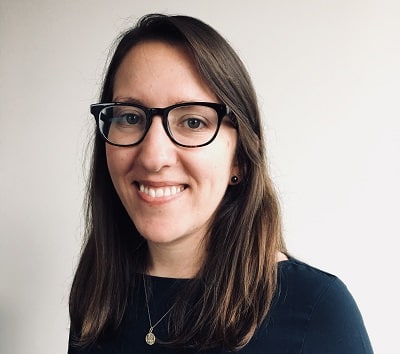Last week, I argued that COVID-19 isn’t inherently changing much about what families, students, teachers, and states demand from schools. More accurately, the pandemic upends the deeply ingrained processes and resources that schools normally rely on to keep their promises to stakeholders.
But as 228 Accelerator’s Caroline Hill has aptly suggested, it’s actually a different, much older pandemic—systemic racism—sparking a movement that would force schools to reconsider and reprioritize the promises they commit to keeping.
So what are the promises that schools are accountable for in the first place? And what would lead them to change in ways that prioritize what Black students and families are demanding?
Understanding schools’ (competing) value propositions
Public education is generally revered for the value it promises to deliver to communities and society at large. But what exactly that “value proposition” is—and for whom—is complex. According to a Center for Education Policy report, in a 2006 national poll, 25% of respondents said that their top reason for public schools was “to give all children a chance to get ahead and level the playing field,” while 22% said “to keep America strong and competitive in the global economy.” Those aren’t inherently divergent goals—but they’re also not inherently complementary.
Schools often articulate their value to society through mission statements, portraits of a graduate, and the like, built with input from an array of community members. These public commitments are then presumed to shape decision-making and practice in schools. Yet tidy mission statements may not account for the various, conflicting, and often unstated values that stakeholders—families, taxpayers, teachers unions, policymakers, and school funders—actually expect schools to deliver. A stated interest from families in “whole child” learning may get upstaged, for example, by an insistence on rigorous academics and admission to competitive colleges.
Almost inevitably, the range of value propositions demanded by different stakeholders creates competition for which promises schools will prioritize first, sometimes at the expense of others. The investigative podcast Nice White Parents, for example, narrates a decades-long pattern in which white parents’ demands consistently won out over parents of color in a New York City school. And a legendary and long-standing confrontation in Arizona showed how a Mexican American Studies program ran afoul of opponents’ demands that schools instill American culture and values, despite how the program was associated with improved achievement and graduation rates.
For school leaders responsible for delivering on this wide range of value propositions, the task can be mind-bending. (Read more in our recent paper about the variety of value propositions schools must deliver.) And particularly for leaders hoping to make changes that combat racism, value propositions play a two-sided role.
The power — and staying power — of public schools’ promises
If schools hope to meaningfully change through a tumultuous year, it’s critical to understand the ways that value propositions can both drive, and inhibit, change.
On the one hand, value propositions are always an organization’s starting point when determining how it will spend resources, make decisions, and sustain its operations. In that sense, formal changes to the value propositions expected of schools can precipitate lasting changes to the ways they operate.
But one great paradox facing schools is that as organizations mature, they lock in the organizational model elements that they developed to deliver on their original promises. While value propositions originally directed the allocation of resources or the development of processes, as time passes, longstanding ways of doing things end up dictating the kinds of value propositions that the organization can deliver.
To navigate this paradox, policymakers and school system leaders hoping to meet new demands can take a two-pronged approach.
The path forward: Broad sweeps and narrow spikes
First, policymakers can influence broad-sweeping changes to the promises that schools must keep. For example, only in the past few decades have schools become accountable for providing quality education to students with learning and other disabilities. Special education services aren’t without fault, but there’s a well-understood baseline expectation that schools provide them. Building public will and legal requirements around a clear and missing value proposition can, over time, embed that proposition into how schools do business.
As schools face up to growing public pressure to confront racial injustice, such broad-sweeping policy changes have a role to play. San Diego Unified is overhauling its grading system to combat racism. Denver Public Schools recently passed a Board resolution to ensure curriculum is representative of students’ cultural identities. A number of districts have cut ties with police. Demand for such measures may continue to grow, especially as widespread remote learning causes some Black parents to doubt whether going back to in-person school, a site of racial trauma for many students, is a wise decision. There’s no question that racial equity is a highly politicized topic for schools right now. Even so, it’s not hard to imagine a stronger role for federal policy to play in providing protections against racial bias and trauma the same way it provides protections for students with disabilities.
But the paradoxical role of value propositions makes a broad-sweeping policy approach insufficient. New, top-down value propositions will layer on top of old ones rather than replacing them, creating competition that can push the newer promises down the priority list. (Case in point: despite the existence of a federal law for their protection, families of students with learning disabilities still often have to fight for accommodations.)
A second approach stands to mitigate some of those challenges, but on a more local level. School system leaders, with the support of enabling policies, can reduce the noise of competing value propositions by developing narrow “spikes” of expertise and focus for individual schools.
For example, Rooted School in New Orleans organizes its resources and processes around the explicit goal of eliminating the wealth gap for African American families. As a charter school, it has an easier time aligning the value propositions expected by stakeholders due to its ability to recruit students, staff, and board members whose interests align with its focus.
Nonetheless, traditional districts have similar tools at their disposal. They can launch a lab or magnet school that optimizes for a targeted set of value propositions, or introduce a “portfolio” strategy that locates decision-making power in schools rather than a centralized bureaucracy.
Allowing individual schools to optimize for a more coherent, and limited, set of value propositions might seem like fuel for segregation. But requiring that all schools strain to deliver on a growing, divergent set of value propositions is more likely to consistently fail some families than satisfy all families. Professor Ibram X. Kendi has argued that rather than integrating schools in a way that presumes White culture as the default, our school system could intentionally create open access to many learning spaces that are “as equally resourced as they are culturally different.”
This points to why the second approach, alone, is also insufficient. Kendi calls out that the biggest problem with segregated schools is not the lack of racial diversity, but the inequitable distribution of resources wherein non-White school districts get $23 billion less than their counterparts in White communities. Here, broad-sweeping policies can prove their worth. Without robust policy to set the baseline for the promises schools must keep and to provide for the equitable distribution of resources, allowing schools to focus on particular value propositions for particular types of families could lead to worsening divides and the erosion of public schooling.
In her post, Caroline Hill wrote, “What has to be true of the public school system to convince the most privileged of us of its merits and the most oppressed of us its virtue so we all can learn together?” It would seem that 2020 has set the stage for public education’s stakeholders, with all of their competing notions of what value schools ought to deliver, to seek an answer to that question. To do so, they must confront the role that those very value propositions play—both in catalyzing new ways of doing things in schools, and in protecting the old ones.



